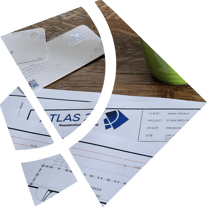Understanding Development Approvals
We outline the key differences between Development Approval, Complying Development, and Exempt Development, highlighting the significance of each approval type.
Atlas 27
2/16/20243 min read
A Guide for Property Owners in NSW, Australia
In New South Wales, Australia, understanding the differences between development approval, complying development, and exempt development is crucial for anyone wanting to start a building project. Navigating the development approval process in New South Wales (NSW), Australia, can be complex and overwhelming for property owners. In this blog post, we'll explore the key distinctions between these approval types and how Atlas 27 can assist in succesfully finishing a project.
Development Approval (DA)
Development Approval (DA) is the most common type of approval sought for construction or renovation projects in NSW. It involves submitting a formal application to the local council or certifying authority for assessment and approval. DAs are required for projects that do not meet the criteria for Complying Development or Exempt Development. Examples of projects that typically require DA include:
Construction of new dwellings or buildings
Subdivision of land
Alterations or additions to existing buildings that do not comply with planning regulations








Complying Development (CDC)
Complying Development (CDC) is a streamlined and fast-tracked approval process for straightforward development projects that meet specific criteria set out in the State Environmental Planning Policy (Exempt and Complying Development Codes) 2008 (Codes SEPP). CDC can be obtained through either the local council or a private certifier and generally has a faster approval timeframe compared to DAs. Examples of projects that may qualify for CDC include:
Construction of single or double-story dwellings
Renovations or extensions to existing buildings that meet specified size and setback requirements
Certain types of commercial or industrial development
Exempt Development
Exempt Development refers to minor development activities that do not require approval from the local council or a certifying authority. These activities are considered low-impact and generally have minimal environmental or social impacts. Criteria for exempt development is also set out in the State Environmental Planning Policy (Exempt and Complying Development Codes) 2008. Examples of Exempt Development include:
Installing garden sheds or carports under a certain size
Minor internal alterations to existing buildings
Installing solar panels or rainwater tanks
How we can help
As a drafting studio, Atlas 27 specializes in assisting property owners with the preparation and submission of development applications, complying development certificates, and drafting plans for exempt development projects. We can:
Prepare detailed plans and documentation to support your development application or complying development certificate.
Ensure that your plans comply with relevant planning regulations, building codes, and standards.
Liaise with the local council, certifying authority, and other stakeholders on your behalf to facilitate the approval process.
Provide expert advice and guidance throughout every stage of your development project, from initial concepts to final construction plans.
In Summary
Understanding the differences between Development Approval, Complying Development, and Exempt Development is essential for property owners embarking on construction or renovation projects in NSW, Australia. By enlisting the services of a professional drafting studio like Atlas 27, property owners can navigate through the approval process, minimize delays, and ensure compliance with all relevant standards and regulations.
Contact us today to learn more about how we can assist you with your development project.


Connect
info@atlas27.com.au
+61 422 236 055
Follow
Stay connected with us


Copyright © 2024 – Atlas 27 – ABN 71 504 928 413
